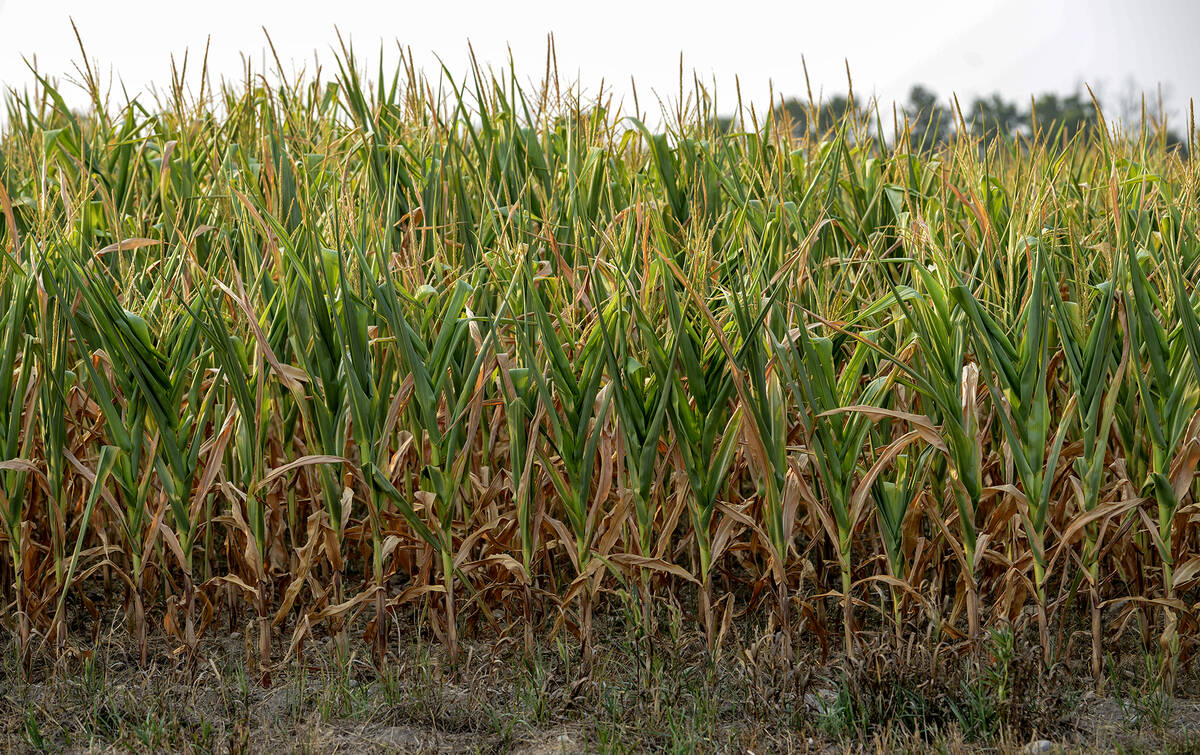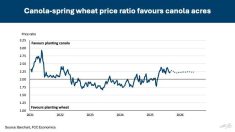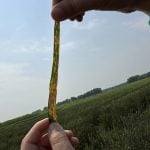Glacier FarmMedia – Conditions are ripe for another poor start for the U.S. hard red winter wheat crop, but there could be a massive Brazilian soybean harvest next year, say analysts.
La Nina is hanging around, and that likely means a third consecutive dry fall in the southern U.S. Plains.
Weather models from the U.S. Climate Prediction Centre, the North American Multi-Model Ensemble and the European Centre for Medium-Range Weather Forecasts are all predicting a dry October, November and December in the winter wheat growing region.
Read Also

Extreme variability marks Ontario’s 2025 corn crop
The yield potential of Ontario’s 2025 corn crop was lost in some areas due to extreme dry conditions.
Why it matters: Although the market is telling U.S. farmers to plant more wheat, conditions for plant growth will not be favourable.
“It doesn’t mean it’s going to be totally dry, but overall, that’s the bias,” Arlan Suderman, chief commodities economist with StoneX, said in a recent webinar.
“That’s a real concern for the hard red winter wheat belt, especially in Oklahoma and Texas and even into Kansas.”
Aaron Harries, vice-president of research and operations with the Kansas Wheat Commission, has seen the same models and agrees with that assessment.
“Most of them don’t show La Nina fading until late winter or early spring, so generally speaking, that’s bad news for us here in the central high Plains,” he said.
Planting is underway and it has also been hot and windy, which isn’t helping matters.
Suderman said all it takes is one good rain to get the winter wheat crop properly established prior to dormancy.
“The question is, will we get that or not? That is going to be the key,” he said.
Harries disagrees with him on that point. This summer’s drought has sapped all the subsoil moisture, which means there would need to be regular rains this fall to get the plants growing and thriving prior to dormancy.
This year’s wheat crop never recovered from its poor start. The previous year it did due to ample spring moisture.
Spring rains are critical, but if the wheat doesn’t get good fall rains it won’t tiller properly and will be vulnerable to winterkill and strong winds.
The lack of subsoil moisture is particularly pronounced in southwestern Kansas, the Oklahoma and Texas panhandles and southeastern Colorado.
“There are places in southwest Kansas that have seen three to four inches of rain in the past 12 months. That’s as bad as it gets,” said Harries.
However, the market is telling U.S. farmers to plant more winter wheat, and he thinks that is what will happen despite the challenges.
“A survey of our board members at a board meeting last week would indicate that most of them thought their acres would go up slightly,” he said.
Suderman said the lingering La Nina also has ramifications for the South American soybean crop.
It likely means a continuation of dry conditions for Argentina.
The correlation is much weaker for Brazil. Some years it has a real adverse impact, while other years farmers in that country get normal to above-normal yields.
For the time being, he is going to assume normal yields for the world’s leading soybean producer.
Based on the feedback from StoneX’s farm clients in Brazil, that would result in an additional 27 million tonnes of production on top of this year’s output of 149 million tonnes, due to increased planted acres.
“That’s why I still have trouble being bullish long-term on soybeans,” said Suderman.
Planting began in Parana state on Sept. 10 and continued in Mato Grosso on Sept. 15. Harvest will occur from March to May.
In the near-term, end users are going to be scrambling to secure adequate supplies of the crop, so the situation will remain bullish for a while.
However, if Brazil has a massive crop on the way, then China will only purchase enough U.S. soybeans to carry it through until Brazil’s crop is available because Brazilian soybeans will be substantially cheaper due to exchange rates.
“That is why it is really hard for me to be bullish in beans long-term,” said Suderman.
– This article was originally published at The Western Producer.













